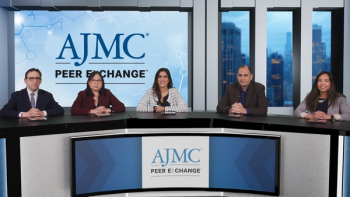
SGLT2 Inhibitor Use in Chronic Kidney Disease
A panel of clinicians react to limitations surrounding the use of SGLT2 inhibitors for patients with chronic kidney disease and type 2 diabetes.
Episodes in this series

Neil B. Minkoff, MD: Let me ask you another question about the practice and how we treat patients like this. Do you gentlemen feel as if SGLT2 inhibitors are underutilized, certainly in primary care, or as those patients are being referred to you?
Eugene Wright Jr., MD: Yes. Some of this is because there’s confusion. I talked earlier about the explosion in new therapies and exploding confusion. As you recall, the SGLT2s have a lower threshold of eGFR [estimated glomerular filtration rate] for glycemic control, between 45 and 60 mL/min. There’s one that has it at 45 mL/min, and all the other ones say below 60 mL/min, but that’s for glycemic control. These were introduced as glycemic-lowering therapies, and that has stuck with practitioners. The challenge is once we get stuck into this paradigm of glycemic control, and many people thought that was a safety issue as well, so below a certain eGFR, people are not prescribing them. In fact, preemptively, for people who are getting close to an eGFR of 45 mL/min, they aren’t even considered.
George L. Bakris, MD: Especially with what Gene just said, this reminds me of friendships. You meet a person for the first time and you get an impression. And I don’t care what happens, that impression is going to stick with you forever. Unfortunately, the SGLT2s were originally brought in as glucose-lowering agents.
I’ll tell you a true story. In 2018, I was called by the then senior editor of American Journal of Kidney Diseases and asked to write a perspective piece on SGLT2s and how they were beneficial in kidney disease. I asked him, “Why do you want me to do this?” He very simply said, “We need to get our colleagues…to start prescribing this stuff.”
And in writing this paper, it occurred to me that the following is true: SGLT2s are cardiorenal risk-reducing agents that happen to lower glucose as well. Essentially, if you look at all the data to date, that holds true. With these agents, you’re not going to follow glucose or blood pressure. You need to put them on there. How do they work? I have news for you. There are at least 12 mechanisms that I’m aware of, and I know that there are more that I’ve missed. So we don’t know. We know what they do in the kidney, but that’s it.
Neil B. Minkoff, MD: This gets at your earlier point, the PCPs [primary care physicians] say, “Here, you do it.”
George L. Bakris, MD: Yes, that’s exactly right. They’re more than happy for me to start it. The endocrinologist at my place actually got mad at one of the cardiologists for starting them. We’re good friends and he told me the story, and I told him he was an idiot, because that’s exactly who should be starting it. In fact, I use them. Are you going to get mad at me? It gave them pause, because even they thought it was a glucose-lowering drug. And now, of course, they’re singing a very different song. This was back in the day.
Transcript edited for clarity.
Newsletter
Stay ahead of policy, cost, and value—subscribe to AJMC for expert insights at the intersection of clinical care and health economics.









































